Associated Professor
AGH University of Science and Technology, Faculty of Metals Engineering and Industrial Computer Science

I share my scientific interests between computer science and its applications in
modelling and design of industrial processes. I’m an author of more than
100 scientific papers published in international and national journals,
and presented during conferences or workshops. I participate in many
scientific and R&D projects realized in cooperation with large companies as
well as with SMEs. This work I hold in the highest regard since the scientific
solutions find a practical application in industry. Since 2020 I've held the
position of Deputy Dean for Science and Cooperation at the Faculty of Metals Engineering and Applied Computer Science.
My interests beyond professional work are focused mainly on active sport practicing,
from which I preferred basketball in past years. Nowadays, I'm in love with sailing, MTB and long-distance running. My small achievements in this area includes completion of mountain half-marathon (twice), street marathon (5 times)
and triathlon on Olympic distance. One of my huge passion for many years have
been skiing and mountaineering including small hills as well as much higher
and steeper summits. Privately: married, father of two fantastic twins Julian
and Dominik, with whom I share all my challenges and passions.
AGH University of Science and Technology, Faculty of Metals Engineering and Industrial Computer Science
AGH University of Science and Technology, Faculty of Metals Engineering and Industrial Computer Science
Academic Computer Centre Cyfronet AGH, projects PlGrid Plus, PlGrid NG and VirtRoll
DUO, privately held company, range of services: computer science – design and implementation of Internet applications
Private Higher School of Management and Banking in Kraków, Programming languages and techniques (C++, Java)
bci-consulting, system’s design, implementation in practice and training, CRM software
Bankowe Centrum Informatyki in Kraków, analysis, design and implementation of advance computer systems
D.Sc. in Computer Science
Institute of Fundamental Technological Research Polish Academy of Sciences, "Methodology of multiscale modelling with application of heterogeneous hardware architectures"
Ph.D. in Computer Science
AGH University of Science and Technology, "Design of new algorithms, based on the particles dynamics, dedicated to images and multidimensional data processing"
Master of Business Administration
AGH University of Science and Technology, "The Design of Customer Relationship Management Systems based on the e-technology"
Master of Computer Science
AGH University of Science and Technology, "Speech Recognition by using Fractal Transformation for English and Polish Vowels"

The main area of scientific interest in related to wide range of computer science applications starting from simple web applications adn finishing on advanced systems supporting industrial processes design and management. My journey in these topics started after studies, when I've joined team of prof. Jan Kusiak focused on applications of artificial intelligence and soft computing. I was interested in neural networks, data analysis and data exploration, which finally rusulted in my Ph.D. thesis. Afterwards, I was closely cooperating with prof. Maciej Pietrzyk in many scientific and R&D projects. The results of these works were focused on modelling and development of numerical libraries including optimization techniques and sensitivity analysis procedures. One of the core product being an effect of European Project funded by RFCS was VirtRoll system. This research allowed me to establish team of Advanced Computational Techniques in Process Design joining together people representing wide range of scientific interests related to multiscale modelling, design and analysis of industrial processes, cybersecurity, high performance and cloud computing.
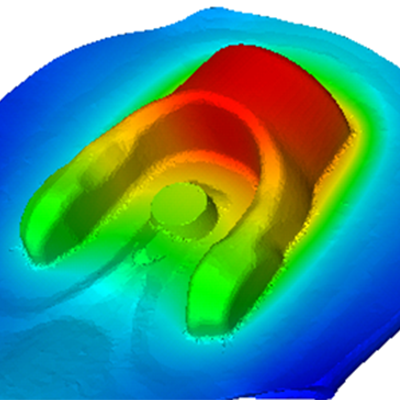
Thermomechanical treatment is one of the most energy-consuming stages of the production process. At present, due to the limited possibilities of control of the forging parameters, especially the temperature, the thermal treatment is separated from the forging process. A forging, after the forging process, is cooled and next transported to the thermal treatment station, where it is heated again and then quenched and tempered. The aim of the project is to develop an energy-saving technology of thermomechanical treatment with the use of the forging heat, based on the optimal thermal cycles. The key solution in the elaborated technology will be the elimination of the necessity of repeated heating of the forging after the forging process, typical for the classic thermal treatment. This will cause a reduction of costs, energy consumption and emission of harmful substances. The control of the thermal cycles during the process will ensure stably quality parameters of the forgings, which will limit the number of defects. The final effect will also be a cheaper forging with more stable properties than one produced by the conventional technology. Within the project, the plans are to elaborate a technology with the use of the forging heat including the following procedures: · direct quenching and tempering; · direct cooling after forging with the use of isothermal annealing; · normalization.
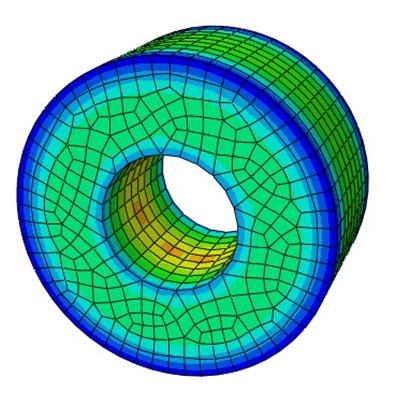
Warehouse logistics in the area of hot-rolled coils storage before the pickling line in the Cold Rolling Mill is usually a big challenge as it is necessary to solve an algorithmic problem which the literature defines as NP-hard. It involves solving a logistic problem of simultaneous movement of several cranes, supply and identification of material i.e. coils, distributing and moving coils in the storage area and finally delivering coils to the pickling line. An optimum solution to such a complex problem is additionally burdened with the necessity to numerically solve an issue of estimating coil cooling time based on the assumption of different configurations of coils storage in several layers.
The aim of the project is to develop a hybrid computer system which will offer a holistic approach to solving the said problems by designing and implementing an integrated system for material tracking, logistics and numerical simulations. The system will be developed as part of the first three stages of the project. Stage 1 will involve the development of a numerical model for the cooling of coils in different storage configurations, including measurement of coil temperature at the entry of the warehouse and control measurements. Stage 2 assumes the development of a complex logistic model based on the use of mixed-integer linear programming methods. At Stage 3 the previously developed models will be integrated with the computer system in construction. Validation of the developed system will involve the construction of a pilot line in the HRC warehouse in ArcelorMittal Poland Unit in Kraków (stage 4). The installation will include a system of automatic control of coil transport, a system of automatic coil identification, a system of automatic tracking of the position of material and wagons on the supply path, a set of manipulators and scanners for creating and verifying the picture of the storage area in real time.
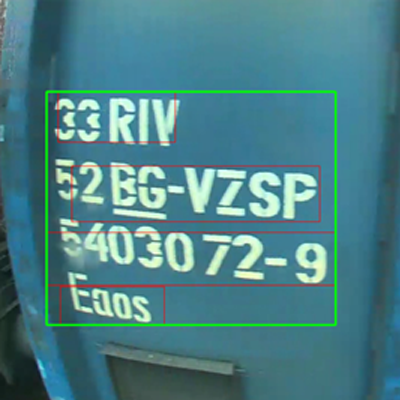
The main aim of the interdisciplinary project is to develop a complete system idea enabling automated coke loading and testing process. System will have a module structure consisting of components based on mechatronic solutions, visual identification, optimization and control software. Mechatronic solution will consist in development of equipment for automated taking of representative coke samples with very diversified granulation (from 0 up to +100 mm) from industrial belt conveyors during loading; next for segregation of taken samples into particular grain fractions which will be further joined in any configurations and proportions. Samples taken in such manner will be used for various physical and chemical tests required for assessment of properties and quality of tested coke as well as for production process control. Installation will be equipped with devices for automatic tests and samples buffering system for which the idea will be developed as well within the project. The system accounts for transmitting coke samples for further laboratory analysis enabling unequivocal identification of samples taken as well as identification of batch and wagon the sample is taken from. It will be possible thanks to visual identification module dedicated to recognize wagon side numbers and to track their position during loading process. Data read out from wagon side walls will be also used in wagon loading control system for process optimization. Such integrated loading and testing line will be executed as a pilot line operated at screening plant No. 3 in ArcelorMittal Poland coke plant in Zdzieszowice. The system will be installed at one of the tracks for wagon loading where operating tests will be performed. Moreover, in scope of works execution, software design will be developed and it will cover all functional elements of pilot line with the aim to be integrated with network and programming infrastructure of the compan

The aim of the research was to create a methodology that enables an effective optimization of manufacturing cycles for materials processing. The research was focused on theoretical aspects of material design based on numerical simulations. Various conventional and multi-scale models were investigated, evaluated and classified. Specific features of these models (predictive capability, computational complexity, robustness etc.) were gathered in a table of significance and used to develop the knowledge base system for the selection of the best model for particular application. Advanced theoretical techniques were used to evaluate and classify the models. These included sensitivity analysis for evaluation of importance of model parameters, probabilistic methods and the worst case scenario for avoiding uncertainties as well as knowledge based expert system (KBS) for control of optimization. ManuOpti optimization system, which was developed by the Authors, was the basis for the design of the process. The system, which has various optimization techniques implemented, was combined with KBS. ManuOpti requests the KBS, which models are the most suitable for given conditions (including technological properties of processes, expected reliability and predictive capabilities, and computational costs of available models). The proposed system will enable dynamic adaptation of integrated model during optimization. A novel idea of application of different models or metamodels depending on the distance from the minimum of the goal function was developed. The optimization system, which is not directly supervised by a user, was created. Models in this system are chosen automatically, what was done by the expert system before calculating of each goal function’s value. Recapitulating, the objectives of the project was reached by application of a variety of theoretical conventional and multiscale models, optimization techniques and artificial intelligence tools. Classification of material models with respect to their computational capabilities wasone of the outputs of the project. New optimization strategy based on the knowledge base was proposed.

Project aims was the development of hybrid production technology of rails characterized by increased durability in the service conditions involving different material solutions (pearlitic, hypereutectoid and multiphase steel) and unique inline heat treatment methods. The project was realized for in Arcelor Mittal Poland, Branch in Dąbrowa Górnicza. The approach proposed in the project allowed adjustment of material and technological solutions to obtain required rail properties in varying service conditions. As a result of the project accomplishment, the rails of enhanced resistance to wear and development of the contact fatigue defects will be produced and tested in the field conditions.

The multiscale computing methods, which are composed of different algorithms running concurrently (e.g. Cellular Automata, Finite Element) require specific approaches to be performed efficiently. However, there are many problems related to these approaches, including NOT only parallelization of calculations, but also problems of memory allocation, exchange of information between iterations and scales or space decomposition and load balancing. These problems have to be analysed simultaneously from software and hardware point of view to create complex methodology containing all aspects of computing.The main objective of the project was to create the methodology of design, implementation and deployment of multiscale computing on heterogeneous hardware architectures.
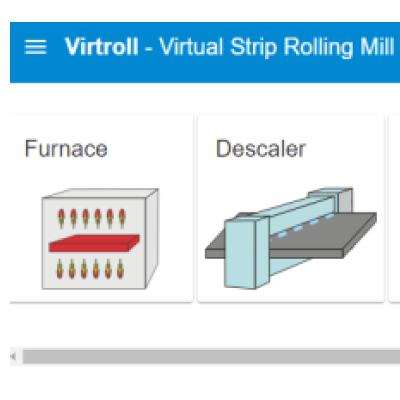
The proposal was aimed at creation of a computer system dedicated to modelling of hot rolling mill and supporting flexible design of new rolling technologies (i.e. SSMR and JFE processes). The functionality of the system will include the following modules:
The list below presents some selected publications from various categories. You can find there journal and conference papers as well as book and book chapters.
The paper presents a novel approach dedicated to analysis and optimization of multiscale methods execution on hetero- geneous hardware including processors, graphic cards and other accelerators. The methodology proposed in this paper is based on the investigation, which proved that efficiency of various numerical methods, used for computing purposes on different devices, often behaves unpredictably. This efficiency was analyzed in details and presented in this paper. On the basis of this assumptions two-step optimization procedure was proposed, i.e., before and during calculations, allowing to verify current efficiency and to propose new decomposition of computing domain. Both steps were described and verified in details by using loosely and fully coupled multiscale approaches. Performed validation with discussion of some unconsidered aspects is presented in the paper as well.
Continuous development of the transport industry is associated with the search for new construction materials that combine high strength with good plastic properties. Intensive research during the last few decades has shown that there is still a huge potential for improvement of properties of various metallic materials. New grades called advanced high strength steels (AHSS) with multiphase structures have been developed and widely used mainly in the automotive industry. These microstructures are characterized by large gradients of properties, which cause poor local formability. It is expected that materials with a more heterogeneous microstructure will have superior formability. More detailed models of the microstructure evolution are needed to answer this question. A hypothesis was made that application of the models based on internal variables allows for predictions of gradients of final product properties. The objectives of the present paper were two-fold. The first was to investigate the possibility of the analytical and numerical solutions of the evolution equation for the internal variable and evaluation of these solutions. We propose two numerical methods which give us an accurate approximation of the solution with relatively low computational cost at the same time. Implementation of the developed solutions in the finite element (FE) code and performing multiscale simulation of the evolution of internal variables during thermomechanical processing was the second objective of this paper. This solution supplied information about the distribution of the dislocation density in the volume of the material. Case studies for selected metal forming processes recapitulate the paper.
The need for fast mean field models describing phase transformations in varying temperatures was the motivation for the research. The aim was to propose an austenite-ferrite transformation model which can be successfully substituted for the JMAK model and eliminate its weak points. The model consists of a second order differential equation which describes the kinetics of both the austenite-ferrite and the reverse transformations. The main advantage of such an approach is the ability to perform calculations for varying temperature without using the additivity rule. The coefficients in the equations were determined by performing the inverse analysis for the dilatometric data. The inverse approach was transformed into an optimisation task, which was solved using the Particle Swarm Optimization (PSO) algorithm. The first part of the work is devoted to the description of the model and is completed with the calculation of the coefficients obtained for two DP steels. The second part consists of numerical tests and the validation of the model, which was performed by simulations of two industrial thermal cycles. The final part of the work is devoted to the optimisation of the thermal cycle for continuous annealing, in order to obtain the required phase composition by changing parameters of the thermal cycle. This part also contains the results of sensitivity analysis of final phase distribution.
The high quality of steel products used in the transport industry is strongly dependent on the parameters of microstructure created during the thermomechanical treatment. Numerical models of phase transformations based on the solution of diffusion equations presented in this work allow one to determine the correlation between parameters of the technological process, changes of microstructure, and product properties. Consequently, these models can be a useful support of the technology design for manufacturing processes. On the other hand, diffusion-based multiscale models are computationally very expensive. Therefore, two simple single-point models, the Johnson-Mehl-Avrami-Kolmogorov (JMAK) equation and an upgrade of the Leblond model, were used as an alternative for fast calculations. Two industrial processes were selected for testing and validation of the developed multiscale models. The first was manufacturing of dual-phase steel strips and the second was manufacturing of pearlitic steel rails. A finite-element (FE) model was used to simulate temperature changes in the macro scale. Single-point models were solved in each Gauss point of the FE mesh. These models were used to analyze a large number of technological variants and to select those giving the required phase composition in products. The developed diffusion-based models were solved in selected points of the product only. In the micro scale these models simulated the austenite decomposition into ferrite, bainite, martensite, and pearlite. The FE method was used to solve the diffusion equation in austenite grains. The initial and boundary conditions for the diffusion model were determined for local thermodynamic equilibrium using ThermoCalc software. Diffusion-based models were used to simulate the best technological variants selected by the single-point models and to predict advanced parameters of the microstructure (morphology, carbon distribution, distribution of properties). All models were compared with respect to their predictive capabilities and computation times.
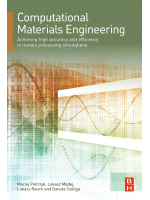
Computational Materials Engineering: Achieving High Accuracy and Efficiency in Metals Processing Simulations describes the most common computer modeling and simulation techniques used in metals processing, from so-called "fast" models to more advanced multiscale models, also evaluating possible methods for improving computational accuracy and efficiency.
Beginning with a discussion of conventional fast models like internal variable models for flow stress and microstructure evolution, the book moves on to advanced multiscale models, such as the CAFÉ method, which give insights into the phenomena occurring in materials in lower dimensional scales.
The book then delves into the various methods that have been developed to deal with problems, including long computing times, lack of proof of the uniqueness of the solution, difficulties with convergence of numerical procedures, local minima in the objective function, and ill-posed problems. It then concludes with suggestions on how to improve accuracy and efficiency in computational materials modeling, and a best practices guide for selecting the best model for a particular application.
Key features
I've started teaching in 2003. At the beginning it was not necessarily related to my core education :). Nowadays, my courses are mainly an effect of commercial jobs undertaken between 2003 and 2013, as well as R&D projects.
Courses are in Polish and English language. Polish version is focused on design and implementation of backend application with RESTful API. English edition contains lectures on frontend technologies. Students gain knowledge on frameworks like React, Angular or Vue.
The main content is focused on description of web tech frameworks others than JS. We are analysing e.g. Django for Python, Ruby on Rails, PHP Symfony and many different technologies like serverless apps or micro service architectures.
This subject gives students knowledge on how to prepare and write scientific publication by using tools like Word or Latex. Part of this course is devoted to analysis of scientific literature and references.
The course is composed of two parts devoted to window applications designed and implemented in various technologies, and mobile systems. The crucial element of lectures is UI and the ways of UI design.
The course includes information on Java apps implementation including basics, UI layouts, MVC pattern, databases communication, web apps and Android apps (3 lectures).
Students gain knowledge on type of programming languages, variables, instructrions, conditional instructions, numbers coding, algorithms, implementation and debugging basics, compilation process and software execution.
Subject starts with description of fundamental numerical machines and block diagrams in design of algorithms. Afterwards pseudocode and Assembler language are described. Finally, more complex systems are analyzed.
Typical subject showing object oriented design and object oriented programming with all necessary definitions.
The subject was focused on description of basics in Unix and Linux systems including management of threads and processes.
The subject starts with definition of graph theory and fundamentals of discrete mathematics, afterwards theory os sets and numbers are presented.
Will be developed
I would be happy to talk to you if you need my assistance in your research or whether you need bussiness administration support for your company. Though I have limited time for students but I'm trying to be responsive. The best way to contact me is by email or in urgent matters by mobile.
You can find me at my office located at AGH Campus, building B4, room 207a.
I am at my office every day from 8:00 until 16:00 am, but you may consider a call or email to fix an appointment.